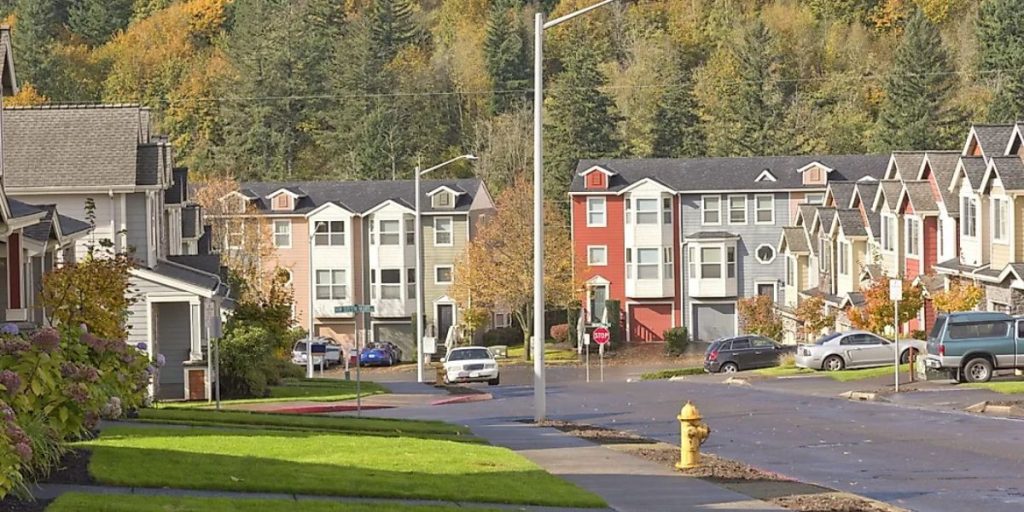The city and cultural diversity of Oregon are only equaled by its landscape diversity. From its bustling urban areas to its rocky coastline to the snow-capped Cascades, Oregon provides visitors and inhabitants with pure nature and all the entertainment, business, and culture they could want. The state’s main cities excel in technology, culture, and outdoor activities. These cities, known for their progressive politics and unique vibe, should be visited.
Oregon’s largest city, Portland, is noted for its tech cluster and liberal politics and environmental standards. Eugene has the famous University of Oregon. The state capital of Salem has a rich agricultural history. Gresham boasts urban and suburban influences. Bend, a former logging village, today attracts tourists with skiing, hiking, and fishing. Intel and other IT giants are in Hillsboro. Nike’s global headquarters is Beaverton. Discover Oregon’s seven largest cities’ culture, beauty, commerce, education, demographics, landmarks, and travel recommendations on our trip!
Portland
People love Portland, known as “The City of Roses,” for its progressive politics, environmentalism, and active lifestyle. As the Northwest’s “Silicon Forest,” the city became a tech hub focused on green energy and manufacturing.
10% Hispanic or Latino, 9% mixed, 8% Asian, and 6% black live in the diversified city. Males and females are nearly equal. Portland’s culture revolves around the Art Museum, International Film Festival, and Rose Festival. Powell’s City Books, Pioneer Courthouse Square, and Washington Park are sites and schools. Portland State University. Visitors enjoy ideal weather in spring and fall. If the weather is good, bike or take the train to see the city.
Also Read: Hurried Escape from Oregon: 8 Towns People Are Leaving Behind
Eugene
Eugene, developed in the mid-1800s along the Willamette River, has long offered inhabitants and visitors a perfect outdoor lifestyle with its natural landscapes. 51% are women, 10% Hispanic/Latino, 9% mixed, and 4% Asian. Eugene is a young university town and countercultural hub since the 1960s. The economy relies on the university, healthcare, manufacturing, and outdoor gear industries.
Track and field athletics dominate “TrackTown USA,” and the Oregon Bach Festival and Eugene Saturday Market add culture. The Jordan Schnitzer Museum of Art, Hendricks Park, and Autzen Stadium are local landmarks. Visit Eugene in summer for outdoor activities and the Oregon Country Fair.
Salem
History-rich Salem lies on the Willamette River and was the Oregon Territory’s and state’s capital. Methodist missionaries founded the city in 1842. The Willamette Valley, Willamette University, and Chemeketa Community College (the main higher education providers) have contributed to the local economy with their fertility, although the government is the biggest employment. Salem has 23% Hispanic/Latino, 12% mixed race, and 3% Asian residents.

Salem has somewhat more men than women. Culture is influenced by the Salem Art Fair and Festival, Oregon State Fair, and Elsinore Theatre. Local attractions include Willamette University, Bush House Museum, Oregon State Capitol, and Silver Falls State Park. Salem Saturday Market is a must-see in spring and fall.
Gresham
Gresham is between Portland and the Cascades. Town is flanked by the Sandy River, and the flat landscape gradually rises east to the Mt. Hood National Forest. Farmland and lush forests are found in the region. The mid-19th-century village relied on agriculture. Gresham now operates in healthcare, manufacturing, and retail. Low-rise buildings and family-oriented culture give downtown a small-town atmosphere.
Visitors feel at home in the walkable downtown with tree-lined streets. New immigrants are making the city increasingly diverse, with 21% Hispanic/Latino, 12% mixed, 5% Asian, and approximately 4% black. There are slightly more men than women. Gresham’s tiny but growing arts culture, symbolized by the Arts Festival, shapes the town. Tourist attractions include Main City Park, Gresham Japanese Garden, and Columbia River Gorge. The city’s main college is Mt. Hood Community College. The Columbia River Gorge is best explored in summer.
Read More: Hidden Treasure Trove in Oregon: Top Beach Towns You Can Afford for Stunning Coastal Living
Hillsboro
The mid-1800s city of Hillsboro, led by Intel and Tektronix, is one of the fastest expanding in the state due to its tech industry. Young professionals and families are drawn here. 24% Hispanic/Latino, 14% mixed, roughly 12% Asian, and 3% black. There are slightly more men than women. The Hillsboro Symphony Orchestra, Oregon International Air Show, and local art galleries influence the city’s culture.
Roloff Farms, Rood Bridge Park, and the Rice Northwest Museum of Rocks and Minerals are attractions. Hillsboro education is shaped by Pacific University’s Health Professionals Camus and several community institutions. Outdoor concerts and Willamette Valley vineyards are greatest in summer.
Leaving Thoughts
These seven cities showcase the state’s beauty, economy, history, culture, and politics. For future residents and visitors. From bustling downtowns to neighboring nature and outdoor activities, these fascinating cities should be explored firsthand.